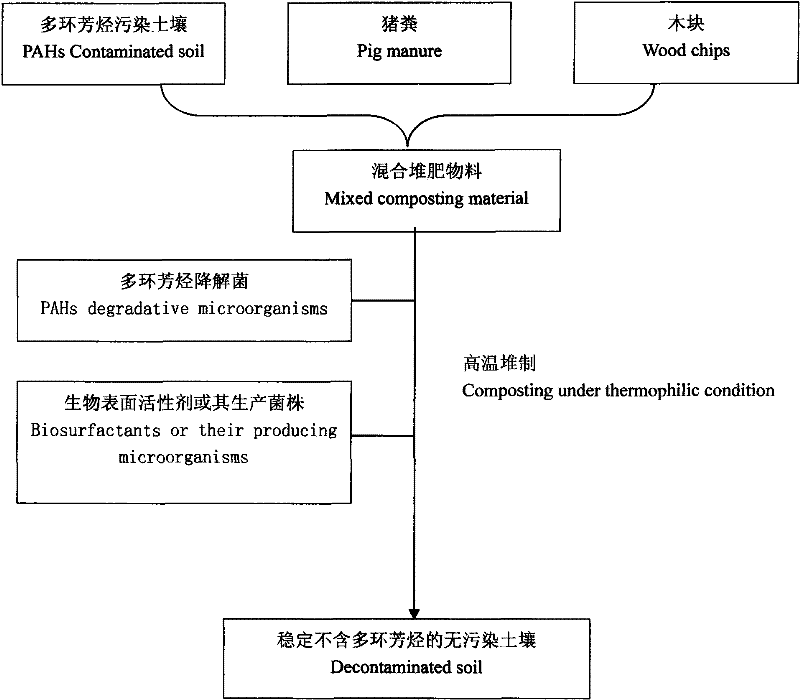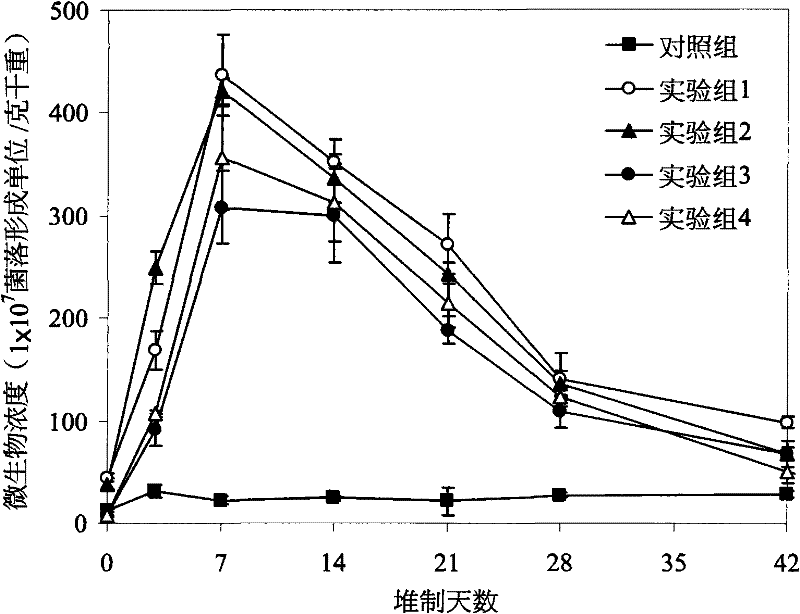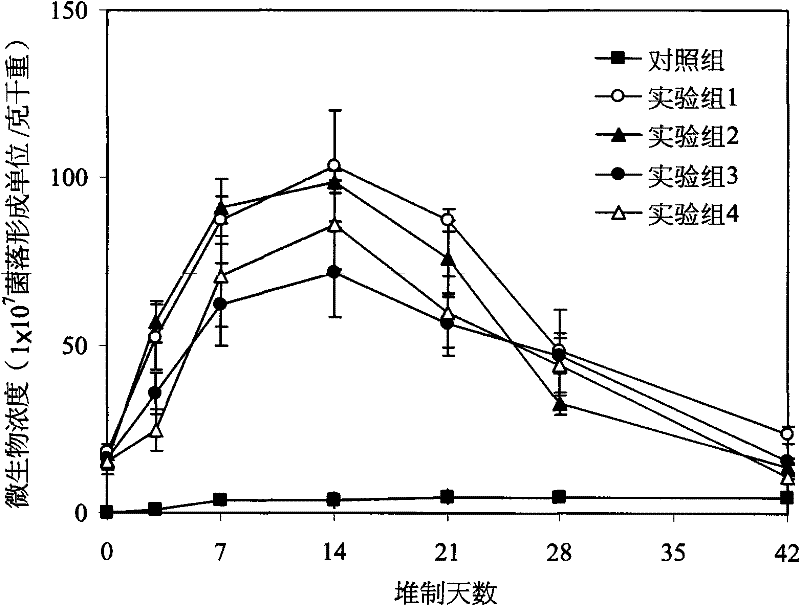Biosurfactant and polycyclic aromatic hydrocarbon-degrading strain enhanced compositing treatment of contaminated soil
A polycyclic aromatic hydrocarbon and biological surface technology, applied in the restoration of contaminated soil, etc., can solve the problems of long processing time, slow degradation of polycyclic aromatic hydrocarbons, and chemical pollution, so as to improve activity, reduce composting time, and speed up composting. The effect of the degradation process
- Summary
- Abstract
- Description
- Claims
- Application Information
AI Technical Summary
Problems solved by technology
Method used
Image
Examples
Embodiment 1
[0057] Embodiment 1: Enrichment and cultivation of biosurfactant production strains from soil
[0058] Soil samples were collected from the crude oil-contaminated soil around the abandoned oil wells in the Tianjin Dagang Oilfield Oil Production Plant. In the laboratory, 5 grams of soil samples were taken and suspended in 95 milliliters of inorganic salt-naphthalene medium. The culture was cultured on a shaker at 50-70 degrees Celsius for 7-14 days, then 10 ml of culture solution was taken to inoculate the same fresh medium, and after continuous acclimatization for 3-5 times under the same culture conditions, a single colony was isolated by streaking on an agar plate and cultured. Cultivated in an incubator. After forming a single colony, observe the colony morphology and cell microscopic morphology to distinguish different strains. The isolated strains were respectively inoculated in broth culture medium and cultured on a shaker at 50-70 degrees Celsius. The surface tension ...
Embodiment 2
[0059] Embodiment 2: the separation and preparation method of biosurfactant
[0060] The biosurfactant was extracted from the culture solution of surfactant-producing bacteria. The extraction method is as follows: the surfactant-producing bacteria strain is centrifuged to separate the cells, and the cell-free supernatant is collected for extraction with n-hexane. The combined emulsified phases were collected and rotary evaporated at 40-70 degrees Celsius, then freeze-dried at minus 20 degrees Celsius, and then dissolved in distilled water to prepare a biosurfactant solution. Crude biosurfactant can be obtained through this extraction step.
Embodiment 3
[0061] Example 3: Enrichment culture of polycyclic aromatic hydrocarbon degrading bacterial community and polycyclic aromatic hydrocarbon degrading bacterial strains
[0062] The present invention can use a variety of polycyclic aromatic hydrocarbon degrading bacteria, including degrading bacterial communities and isolated and purified degrading bacterial strains to enhance bioremediation of polluted soil, which are described in detail below. The enrichment culture of polycyclic aromatic hydrocarbon degrading bacterial community includes: collecting soil samples polluted by polycyclic aromatic hydrocarbons, such as the soil near the former site of ship repair yard in Tsing Yi, Hong Kong. Take 5 grams of soil samples and suspend them in 95 milliliters of inorganic salts-naphthalene medium. The culture is cultured on a shaker at 50-70 degrees Celsius for 7-14 days, and then 10 ml of the culture solution is taken to inoculate the same fresh medium. After continuous acclimatizati...
PUM
 Login to View More
Login to View More Abstract
Description
Claims
Application Information
 Login to View More
Login to View More - R&D
- Intellectual Property
- Life Sciences
- Materials
- Tech Scout
- Unparalleled Data Quality
- Higher Quality Content
- 60% Fewer Hallucinations
Browse by: Latest US Patents, China's latest patents, Technical Efficacy Thesaurus, Application Domain, Technology Topic, Popular Technical Reports.
© 2025 PatSnap. All rights reserved.Legal|Privacy policy|Modern Slavery Act Transparency Statement|Sitemap|About US| Contact US: help@patsnap.com



